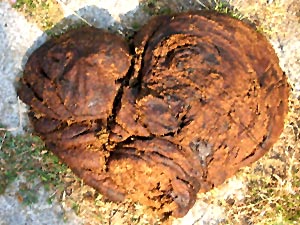 Operation of a Siege mainly includes the actual siege which takes place between the conqueror and his enemy. Chapter IV of book XIII in Arthashastra advises the conqueror to be vigilant towards the security and the peace of the people who has been captured by the conqueror; whenever they decide to rebellion, it should be bestowed with rewards and remittance of taxes, unless the conqueror decides to quit it. In case of battlefield it should be such located as far away from the populous areas as according to Kautilya, no territory gains the name of kingdom unless it is populated with huge number of people. It is only when the people react negatively that the conqueror may decide to destroy the crops, stores, granaries as well as trade o these people.
Operation of a Siege mainly includes the actual siege which takes place between the conqueror and his enemy. Chapter IV of book XIII in Arthashastra advises the conqueror to be vigilant towards the security and the peace of the people who has been captured by the conqueror; whenever they decide to rebellion, it should be bestowed with rewards and remittance of taxes, unless the conqueror decides to quit it. In case of battlefield it should be such located as far away from the populous areas as according to Kautilya, no territory gains the name of kingdom unless it is populated with huge number of people. It is only when the people react negatively that the conqueror may decide to destroy the crops, stores, granaries as well as trade o these people.
Operation of a Siege mentions that when the conqueror is certain that his army has abundance of staple corns, weapons, raw materials, machines, labourers etc and has best and most favourable weather to wage a war, whereas his enemy is located in just reverse position with unfavourable atmosphere, suffering from loss of life, famines, diseases etc, then he may begin the siege. Having well guarded with camps, transports, supplies, and roads of communication, the conqueror may proceed by digging ditches, and raise rampart, he can get the water vitiated and then circulated in the ditches round the enemy`s fort. He may cause destruction to his enemy by damaging their machines or may take recourse to two or three strategic means of siege. Having captured the birds and animals the conqueror can get their tails tied with inflammable powder and allow them to spread it over the fort of the enemy; it can also use inflammable goods like cow dung and other items made up of such inflammable artefacts which shall set the fort ablaze within few hours and shall destroy his raw materials. He can further use materials like fire arrows with turpentine, wax and animal products. In spite of his preparation Kautilya restricts the conqueror and mentions that when there can be other sources to capture the enemy other than fire then no attempt should be made to set fire as it not only affects goods but also destroys people, grains, raw material, grains, cattle, gold etc.
Operation of a Siege advises that if the fire breaks out accidentally or intentionally kindled or when the enemy`s people are engaged in sacrificial performances, or when they are busy in fighting or quarrelling over liquors, when they are too much tired of daily routines of warfare, then the it is the ideal moment to attack the enemy. While pretending to be the biggest friend of the enemy king the conqueror can attack him from the forests when he discards the camps and the latter comes out. The conqueror can further harm him by sending him merchandise with poison or can capture the enemy by sending spies in guise of friends and relatives.
Having captured the enemy and after capturing the fortress the conqueror should give a quarter to the army of the enemy who has been devastated and who are lying disfigured as a result of the destruction caused due to the war. After capturing the fort of the enemy and the surrounding areas around the enemy`s fort, the conqueror should concentrate on the Madhyama king and catch hold of the neutral king and in the absence of both madhyam king and the neutral king, the enemy king shall be forced to surrender completely.
Thus, Operation of a Siege suggests that the conqueror should first concentrate his immediate enemy and put him down and then concentrate on the second enemy, then on third and on the fourth. Having seconded his power he should then concentrate in ruling the world; having different people living on his land the conqueror should now enjoy in governing it in accordance with the duties prescribed to the king. Arthashastra as such allows the conqueror to use any method to achieve his goal and then live a moral and pious life.



















